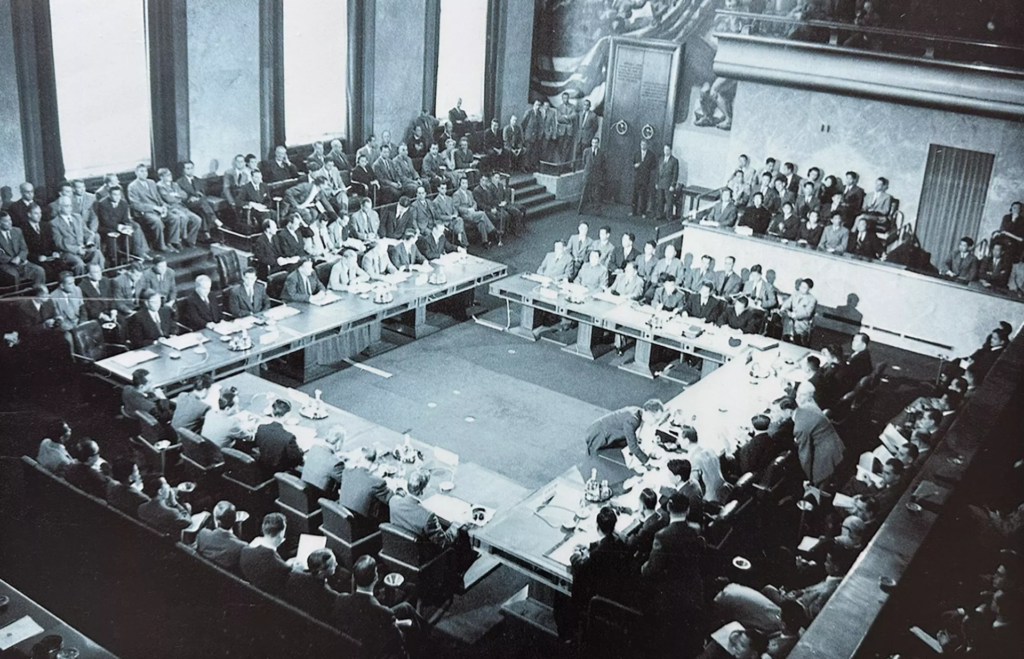The Vietnam War stands as one of the most significant conflicts of the 20th century, leaving an indelible mark on global politics and reshaping the destinies of nations. This protracted struggle not only determined the fate of Vietnam but also profoundly impacted American society and international relations. For those seeking to understand this crucial period in history, Vietnam offers a unique opportunity to explore the sites where these momentous events unfolded.
This article delves into ten defining moments of the Vietnam War, providing context and insights for those who wish to embark on a journey through this complex and impactful chapter of world history. By examining these key dates, we can gain a deeper understanding of the war’s progression, its far-reaching consequences, and the lessons it holds for future generations.
If you wish to discover the most significant sites of the Vietnam War and understand their history on the ground, feel free to contact our local travel agency for a tailor-made itinerary through Vietnam.
May 7, 1954: The battle of Dien Bien Phu concludes
Our exploration of Vietnam’s wartime history begins with the Battle of Dien Bien Phu, a confrontation that would change the course of Southeast Asian history. This 56-day siege in the remote northwestern valley of Dien Bien Phu culminated in a decisive victory for the Viet Minh forces led by General Vo Nguyen Giap, effectively ending French colonial rule in Indochina.
The French defeat at Dien Bien Phu was more than just a military loss; it represented a seismic shift in the global balance of power. It demonstrated that a well-organized and highly motivated indigenous force could overcome a technologically superior Western army, inspiring anti-colonial movements worldwide.
Today, visitors to Dien Bien Phu can explore the restored battlefields and visit the Dien Bien Phu Victory Museum. These sites offer invaluable insights into the strategies and determination that led to this turning point in Vietnamese history. The preserved trenches, bunkers, and war relics serve as a poignant reminder of the human cost of the conflict and the resourcefulness of the Vietnamese people in their struggle for independence.
October 23, 1955: Establishment of the Republic of Vietnam
In the aftermath of the Geneva Accords of 1954, which temporarily divided Vietnam along the 17th parallel, the southern half of the country became the Republic of Vietnam. On October 23, 1955, Ngo Dinh Diem proclaimed himself as the president of this new nation, marking the formal establishment of South Vietnam.
This event solidified the political divide between the communist North and the U.S.-backed South, setting the stage for the escalating tensions that would eventually lead to full-scale war. Diem’s leadership, characterized by authoritarianism and favoritism towards the Catholic minority, would prove controversial and ultimately contribute to the instability of the South Vietnamese government.
The establishment of South Vietnam as a separate entity underscored the ideological split that would define the conflict for years to come. It also marked the beginning of increased U.S. involvement in Vietnamese affairs, as the American government sought to support the fledgling anti-communist state.
January 3, 1957: the collapse of the Geneva Accords
The Geneva Accords, signed in 1954, were intended to bring peace to Vietnam through nationwide elections scheduled for 1956. However, it had become painfully clear that these accords had failed. The promised elections never took place, and both North and South Vietnam had effectively abandoned the agreement’s terms.
This failure deepened the divide between the two regions and set the stage for increased international involvement, particularly from the United States. The collapse of the Geneva Accords highlighted the challenges of implementing international agreements in a deeply divided nation and foreshadowed the complexities that would characterize the entire Vietnam conflict.
The breakdown of this diplomatic solution paved the way for military escalation, as both sides began to see armed conflict as the only means of achieving their goals. This pivotal moment serves as a reminder of the importance of robust and enforceable international agreements in preventing and resolving conflicts.
August 2, 1964: The Gulf of Tonkin incident
The Gulf of Tonkin incident represents a critical moment in the escalation of U.S. involvement in Vietnam. On August 2, 1964, the U.S. destroyer USS Maddox reported being attacked by North Vietnamese torpedo boats in international waters. A second alleged attack was reported on August 4, though the veracity of this claim has since been questioned by historians.
Regardless of the details, these incidents provided the Johnson administration with the justification it sought for greater military intervention. The resulting Gulf of Tonkin Resolution, passed by Congress on August 7, granted President Lyndon B. Johnson broad powers to conduct military operations in Southeast Asia without a formal declaration of war.
This event serves as a stark reminder of how misunderstandings, misrepresentations, or deliberate manipulations can have far-reaching historical impacts. The Gulf of Tonkin incident and its aftermath highlight the dangers of making hasty decisions based on incomplete or potentially flawed intelligence, especially in matters of war and peace.
March 8, 1965: First U.S. combat troops land in Vietnam
The arrival of the first U.S. combat troops in Vietnam on March 8, 1965, marked a significant escalation of American involvement in the conflict. The landing of 3,500 Marines at Da Nang air base in South Vietnam signaled the beginning of a large-scale U.S. military presence that would last for nearly a decade.
This deployment represented a major shift in U.S. policy, moving from an advisory and support role to direct combat involvement. The decision to commit ground troops was driven by a combination of factors, including the deteriorating military situation in South Vietnam and the Johnson administration’s commitment to containing the spread of communism.
The arrival of U.S. combat troops had profound implications for both Vietnam and the United States. For Vietnam, it meant an intensification of the conflict and increased destruction across the country. For the United States, it marked the beginning of a protracted and increasingly unpopular war that would have lasting effects on American society, politics, and foreign policy.
January 31, 1968: The Tet offensive
The Tet Offensive, launched on January 31, 1968, was a coordinated series of surprise attacks by North Vietnamese forces and the Viet Cong on more than 100 cities and outposts in South Vietnam. This massive operation, coinciding with the Lunar New Year (Tet) holiday, caught U.S. and South Vietnamese forces off guard and represented a turning point in the war.
Although ultimately a military failure for the North, with many of the attacks repelled and heavy casualties sustained, the Tet Offensive had a profound psychological impact. The scale and ferocity of the attacks shocked the American public and media, who had been led to believe that the war was progressing favorably. Images of intense urban warfare, including fighting near the U.S. Embassy in Saigon, contradicted official optimistic assessments of the war’s progress.
The Tet Offensive marked a crucial shift in American public opinion, eroding support for the war effort and intensifying anti-war sentiment. It demonstrated the determination and capabilities of the North Vietnamese forces and the Viet Cong, and raised serious questions about the viability of the U.S. military strategy in Vietnam.
March 16, 1968: The My Lai massacre
One of the darkest chapters of the Vietnam War unfolded on March 16, 1968, in the village of My Lai. U.S. Army soldiers from Charlie Company, 1st Battalion, 20th Infantry Regiment, 11th Brigade, under the command of Lieutenant William Calley, killed hundreds of unarmed civilians, including women, children, and the elderly.
The massacre, initially covered up by military authorities, came to light more than a year later through the efforts of investigative journalists and whistleblowers. When the truth emerged, it sparked international outrage and intensified anti-war sentiment in the United States. The My Lai Massacre became a symbol of the war’s brutality and the moral complexities faced by soldiers in a conflict where the line between combatants and civilians was often blurred.
Today, the Son My Memorial in Quang Ngai Province stands as a somber reminder of this tragic event. Visitors can tour the museum, which houses artifacts and photographs, and walk through the preserved village grounds. This site offers a powerful and moving experience, encouraging reflection on the human cost of war and the importance of ethical conduct in conflict.
The My Lai Massacre and its aftermath led to significant changes in the U.S. military’s rules of engagement and training procedures, emphasizing the importance of adhering to international laws of war and respecting civilian lives. It remains a painful reminder of the atrocities that can occur in wartime and the need for accountability and transparency in military operations.
January 27, 1973: Signing of the Paris Peace Accords
After years of protracted negotiations, the Paris Peace Accords were signed on January 27, 1973, formally ending direct U.S. military involvement in Vietnam. The agreement, officially titled “Agreement on Ending the War and Restoring Peace in Vietnam,” was signed by representatives from the United States, North Vietnam, South Vietnam, and the Provisional Revolutionary Government (representing the Viet Cong).
The accords called for a ceasefire between North and South Vietnam, the withdrawal of all U.S. troops, the return of prisoners of war, and the preservation of the demilitarized zone at the 17th parallel. It also allowed North Vietnamese troops to remain in place in the South, a concession that would prove crucial in the war’s final outcome.
While the Paris Peace Accords did not bring an immediate end to the conflict between North and South Vietnam, they marked a significant shift in the war’s dynamics. For the United States, the accords provided a way to extricate itself from a costly and increasingly unpopular war.
March 29, 1973: U.S. Troops withdraw from Vietnam
Following the Paris Peace Accords, the last U.S. combat troops left Vietnam on March 29, 1973, marking the end of direct American military involvement in the conflict. This withdrawal represented a significant milestone in the war’s history and in U.S. foreign policy.
The sight of American soldiers boarding planes and ships to return home was met with mixed emotions. For many Americans, it represented the long-awaited end of a controversial war. For others, particularly South Vietnamese who had come to rely on U.S. support, it was a cause for concern about the future.
The withdrawal of U.S. troops did not mean an end to American involvement in Vietnam. The United States continued to provide military aid and support to South Vietnam, but without the presence of combat troops. This reduced support, combined with internal issues within the South Vietnamese government and military, would ultimately contribute to the fall of Saigon two years later.
April 30, 1975: Fall of Saigon and Vietnam’s reunification
The Vietnam War came to its dramatic conclusion on April 30, 1975, with the fall of Saigon to North Vietnamese forces. This event marked the reunification of Vietnam under communist rule and the end of a conflict that had spanned decades.
The fall of Saigon represented not only the military defeat of South Vietnam but also the failure of U.S. policy in Southeast Asia. It led to a period of reflection and reassessment in American foreign policy, often referred to as the “Vietnam Syndrome,” which influenced U.S. military interventions for years to come.
For Vietnam, the war’s end brought reunification but also new challenges. The country faced the daunting task of reconstruction, reconciliation between North and South, and establishing its place in the post-war international order.
Vietnam war: A conflict that shaped History
The war’s impact extended far beyond the borders of Vietnam, influencing global politics, reshaping American society, and leaving lasting imprints on popular culture. It sparked a period of intense social and political upheaval in the United States, contributing to the civil rights movement, the counterculture of the 1960s, and a reevaluation of America’s role in the world.
For Vietnam, the war’s aftermath brought both challenges and opportunities. The country embarked on a difficult path of reconstruction and reconciliation, eventually emerging as a unified nation with a rapidly developing economy and an increasingly significant role in Southeast Asian affairs.
If you want to uncover more untold stories and visit the very places where history unfolded, consider exploring Vietnam. Learn more about the country’s war legacy and immerse yourself in its culture and landscapes through a tailored tour. Plan your Vietnam journey now to step into the heart of history.




























